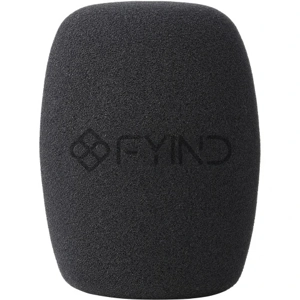A microphone windscreen is an accessory used to reduce or eliminate wind noise when recording audio outdoors. Wind noise can be a major problem for audio recordings, especially in windy conditions.
A windscreen is typically made of foam or fur and is placed over the microphone to reduce the wind that reaches the microphone diaphragm. This helps to prevent the wind from causing unwanted noise in the recording.
Many different types of microphone windscreens are available on the market, ranging from simple foam covers to more advanced designs that use multiple layers of foam and fur to provide maximum wind protection.
Some windscreens are designed to fit specific microphones, while others are more universal and can be used with various microphones.
When choosing a windscreen, it is important to consider the type of microphone you are using and the conditions in which you will be recording. For example, recording in very windy conditions may require a more advanced windscreen that provides maximum wind protection.
On the other hand, if you are recording in less windy conditions, a simple foam windscreen may be sufficient.
In addition to reducing wind noise, a windscreen can also help to protect your microphone from dust, dirt, and other debris. This can help extend your microphone's life and ensure that it continues to perform at its best.
If you are in the market for a microphone windscreen, there are many different options available to choose from. Whether you are a professional audio engineer or a hobbyist, a windscreen can be a valuable accessory that can help to improve the quality of your recordings and protect your microphone from damage.
1. Why must I replace the microphone windscreen every few years?
Ans: The windscreen ages over time, begins to dust, and pieces can get lost.
2. What is the purpose of a microphone windscreen?
Ans: The primary function of windscreens is to prevent wind noise, but they are also effective in protecting microphones.
3. How effective are microphone windscreens?
Ans: The effectiveness of a windscreen depends on the density of the foam or fur material used. Denser foam is better at reducing wind noise.
4. What factors should I consider when buying a windscreen?
Ans: Choosing a windscreen that fits snuggly on your microphone is important to seal any leakage points and prevent air from disturbing the diaphragm. The right windscreen for your device depends on the external microphone you use with it.
5. Who invented the microphone windscreen?
Ans: The inventor of the microphone windscreen is unknown, but they have become a recognizable tool in the media world.
Popular Categories
Popular Categories




